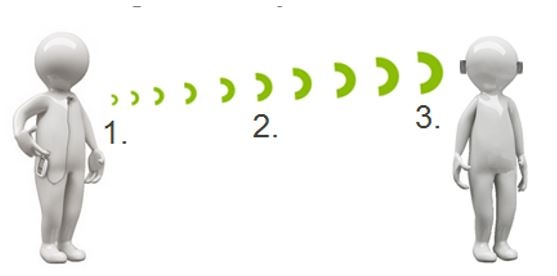
Breaking down barriers to deliver better hearing in noise at a distance
A recent field trial shows that a Roger™ receiver is faster and easier to set up in hearing aids with RogerDirect™ than previous systems requiring external receivers.
Ever had one of those frustrating dreams where you are searching for something or are wanting to achieve a particular goal but all of these obstacles/barriers keep getting in the way, making it ‘just out of reach’? According to dream analysis, this could reflect something that is felt as ‘unattainable’ in the real world.1 Now I don’t usually ascribe to dream analysis, but perhaps this isn’t so airy fairy after all. That is, I certainly believe that a dream or vision can inspire people to break down barriers, overcome challenges, and create innovative technology that is truly life changing.
Roger technology – Breaking down barriers to better hearing
Some listening situations require us to hear sounds from a distance, and, when these signals are further than around 1.5m away and/or noise levels are high, hearing aids alone are often not enough to deliver the best hearing possible. This is precisely where Roger technology can help. Until recently, Roger systems comprise a microphone that is worn by, or placed near, the speaker of interest which picks up and wirelessly transmits the signal to a receiver either worn around the neck or attached to a hearing aid(s) (Fig 1).

The benefits of Roger technology, which automatically adjusts its behavior to deliver SNR advantage across different levels of background noise, are well established. 2,3,4 Despite these well-known benefits, many clients that could potentially benefit from such systems don’t use them, often due to barriers such as increased hearing aid size due to the need for an external receiver, complexity of ordering and set-up by the clinician (e.g., determining receiver compatibility, physically attaching the external receivers, etc), and ease of use.5
Dream big – Roger goes Direct!
Phonak’s dream was to remove as many barriers as possible to enable more people with hearing loss to enjoy the benefits of Roger technology. And the clever folk in our R&D department have overcome barriers through innovation to make Roger …. go ….. Direct!. RogerDirect was designed to overcome the aforementioned barriers to stream the signal directly from the Roger microphone into the hearing aids. It removes the need for external receivers and makes set-up quick and easy, without compromising the proven performance of Roger technology. But does RogerDirect really make it quicker and easier to set up a Roger system? During our Marvel 2.0 launch activities in New Zealand we invited a number of people working in the hearing healthcare industry to gain hands-on experience with Phonak Marvel and provide feedback on how it went.
A sneak peek at some of the results…
47 hearing care professionals (HCPs) participated and results showed that around 75% were faster at installing a Roger receiver into a Marvel hearing aid with RogerDirect versus attaching an external Roger receiver onto a legacy hearing aid. The time savings were significant (see Fig 2A). Moreover the majority of HCPs rated it as either ‘far easier’ or ‘easier’ to install Roger receivers versus attaching an external Roger integrated receiver (see Fig 2B).

I invite you to read the full article published in the latest Hearing Review.
References
- Dream Dictionary – ‘Out of reach’. http://www.unclesirbobby.org.uk/dreamdictionary/out-of-reach.php. Retrieved on 7/02/2020
- Thibodeau, L. (2014). Comparison of speech recognition with adaptive digital and FM wireless technology by listeners who use hearing aids. American Journal of Audiology, 23(2), 201-210
- Wolfe, J. et al. (2013). Evaluation of Speech Recognition of Cochlear Implant Recipients Using a Personal Digital Adaptive Radio Frequency System. American Journal of Audiology, 24(8), 714-724(11)
- Wolfe, J. et al. (2015). Comparison of wireless microphones: Study indicates that Roger delivers superior listening performance in moderate-to-high background noise. Phonak Field Study News. Retrieved from www.phonak.pro/evidence. Accessed April 28, 2020.
- Fabry, D, Mulder, H & Dijkstra, E. (2007). Acceptance of the wireless microphone as a hearing aid accessory for adults. The Hearing Journal, Vol. 60(11), 32-36
